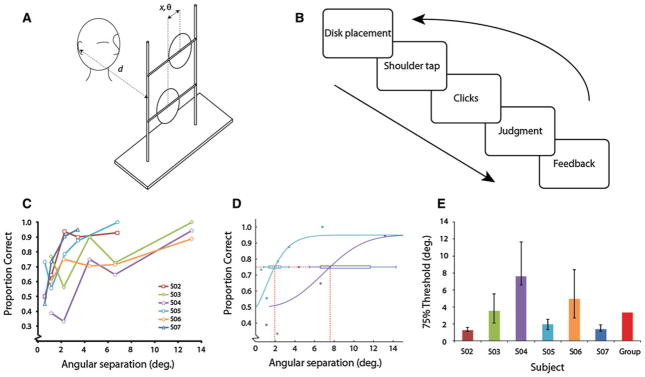Fig. 1.

a Experimental setup for vernier echolocation discrimination. The stimulus frame was situated such that the normal distance between the plane of the disks and the ears was d. For 3 participants, d = 50 cm, and for 3, d = 100 cm. The auditory angle subtended, θ, was calculated by using the center-to-center horizontal separation between disks, x. At a distance of 50 cm, θ was between 1.1° and 13.2°; at 100 cm, it ranged from 0.57° to 3.4°. x was always between 1 and 12 cm. b Structure of one trial. While experimenter placed the disks at the appropriate separations on the frame, a barrier prevented auditory cues from informing subjects about the location of the disks. The barrier was removed, and a shoulder tap signaled the subject to begin clicking. The subject then made a judgment and received feedback. Sessions consisted of 80 trials and five stimulus separations. c Performance versus angular separation between disks for six subjects. Chance performance was 50%. d Calculation of 75% performance thresholds. Two representative psychometric functions are shown, from subjects S04 and S05. Confidence intervals were generated with psignifit’s BCa bootstrapping method, running 10,000 simulations. e Thresholds plotted for each subject and group average. Individual subjects’ error bars are bootstrapped standard deviations; group average is the median of the distribution of individual subjects’ bootstrapped and averaged thresholds (see “Methods” for details)
